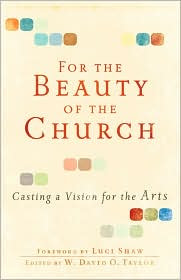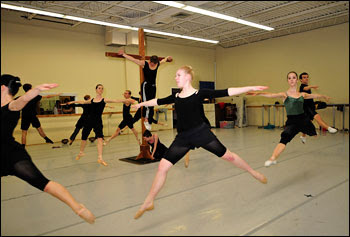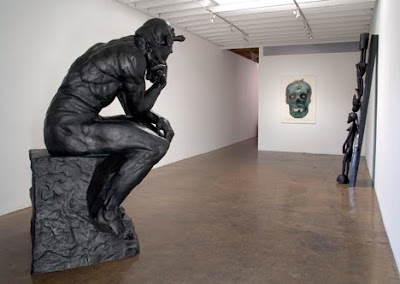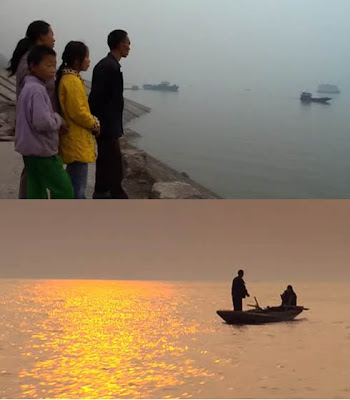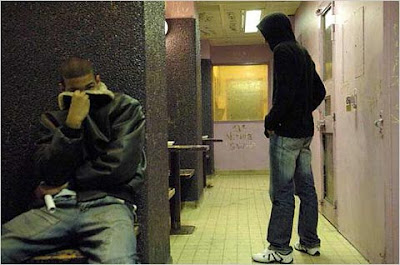An article from IMAGE
The International Issue (#65) includes poetry in translation from Russian, Latvian, Romanian, Spanish, Italian, and Portuguese. We asked the translators who contributed work to the issue about how they see their art: What’s the value of reading poetry in translation? That is, if we’re not really hearing the sounds and rhythms of the poet’s original language, what are we getting out of it?
Even an imperfect translation takes us out of the box of our own culture, gives us a sense of how to think in different terms, how to see with different eyes. Cultural dynamics are crucial to artistic activity. We want to know what our friends are doing; we want to remember what our ancestors did. We must have translations of all time—of Greek and Latin, of Sumerian and Aramaic, of Sanskrit and classical Mandarin, of Old English and Middle English! Bless the poet able to think fluently and freshly in two or more languages like Richard Wilbur, who offers us not only his own poetry but also fluent translations in our time of the great seventeenth-century French theater of Corneille, Racine, and Molière.
—F.D. Reeve
A poet is transmitting ideas and perceptions; these may or may not be related to the poet’s country of origin or residence. Personally I like to see a poem in print; line breaks and the look of it are important to me. If the reader becomes intrigued with researching the poet’s nationality, reading or hearing the original language, it can of course be done thanks to international access to the web. It’s rather like subtitles for films or opera: many Latvians went to hear the Philip Glass opera Satyagraha performed in Sanskrit, because the language is so similar to Latvian, but they certainly needed the translation to understand what it was about. After you’ve read the libretto, you can close your eyes and relate to the emotion expressed—it becomes universal. A good translator can render the work so seamlessly that it seems to have been written in the language translated into.
—Inara Cedrins
I know some people who have decided to learn Italian precisely to read the original after having been introduced to the translation. Just as it is better to have loved and lost than not to have loved at all, so is it better for one to have read Rondoni with my potentially flawed translations than to have never experienced his ethos and vision. Around the world, people read the Bible in English, in Chinese, in Hungarian, etc., and they are inspired, enlightened. Yet, how many “know the Lord” in Hebrew, much less Aramaic? Basho’s haikus in Japanese? Or Mandel’stam in Russian?
Experts in Plato’s philosophy have never read the original in Greek, so the important thing is to enter into dialogue with the works, as well as with other readers, for any translation is, in itself, already a form of exegesis. In fact, when I wrote my dissertation on Montale’s Italian poems, despite my knowledge of Italian and my readings of the English translations, it was a French version of his opus that truly gave me clarity and insight—was this a “better” version of Montale himself? Who knows, for all literature is but a translation of the real world.
—Gregory Pell
“Traduttore, traditore,” the saying goes: translator, traitor. Indeed, no translation succeeds in bringing every nuance of the original into the target language. But I tend to think that translation is less a betrayal than a moment of redemptive possibility. Less an untrustworthy task shackled by Babel’s inheritance than the inviting, proliferative spirit of Pentecost.
Take, for example, Psalm 51 in the New International Version. This is the text recited at my church just before Communion, and I have long loved it as a poem. Now, Biblical texts are often cited in discussions of the treasons of translation, and in terms of beautiful language, the King James usually comes to mind long before the NIV. What is more, I know from consulting Robert Alter’s translation of the Psalms that there are questions about and alternatives to some of the choices the NIV has made. Still, the lines of verse 7, “Cleanse me with hyssop, and I will be clean; / Wash me and I will be whiter than snow” never cease to strike me. Why? Part of the thrill comes from the image of the hyssop recalling purification rituals described in Leviticus. Part comes from the perfect dactylic tetrameter of these lines in English. Foreign image and familiar rhythm, joined by what I want to call the grace of translation. I think reading in translation, in making us attentive to linguistic difference and poetic craft, makes us attentive not only to error, but to grace.
—Leslie Harkema
My first translations (of women poets) were part of the women's movement of the 1970s. The prose works I've translated also had a political dimension—Nicaraguan solidarity in the 1980s. Essentially, I have translated to be part of something, wanting to share work by writers I was discovering. I'm thinking now of the Cuban poets I was privileged to meet in Havana in the 1980s—Morejón, Vitier, García Marruz. I also confess to liking the ability to write without facing the blank page, being able to start with a text. Translation, however frustrating at times, helps keep under wraps the anxiety involved in writing. It also seems a positive enough activity—so when I came across this statement by Wallace Stevens in his Adagia, I felt a painful jolt: “The writer who is content to destroy is on a plane with the writer who is content to translate, both are parasites.” Ouch. Wasn’t it the opposite, that the original gained an expanded life from the translator’s effort, by definition a kind of service? Or was something doubtful going on? Looking up the word parasite, I felt better after seeing the original meaning of the word in Greek: parasitos is a “person who eats at the table of another,” or even a “professional dinner guest”—there to amuse the host. I like the idea of being hosted, entertained; and in return being entertaining, lingering at my place at the proverbial table for months or years. As Stevens also said, “The individual partakes of the whole. Except in extraordinary cases he never adds to it.”
—Kathleen Weaver
I try to recover the metaphor, voice, and rhythm of the original poet by reading as many different translations of the same poem as I can get my hands on. Each translation provides a different angle on the original. It’s a little like walking around an oak tree, I suppose, to see it from alternative viewpoints. By combining viewpoints, I hope to get close to the real thing. The trouble is, not every poet has multiple translators. It’s easier to find translations of Rilke, for example, or Neruda, than of the Swedish poet Tomas Transtromer.
But suppose there’s only one translation of a poet’s work? Still, reading that can be wonderful. Whatever is lost of the original rhythm and sound, I am frequently surprised at the pleasures I do find, for instance, an intriguing strangeness of diction, startlingly different landscapes, thought-provoking uses of metaphor, a new way to look at ritual, strategies for layering narrative which offer new ways to think about time, and above all, unique and charismatic voices. As our world shrinks, I feel increasingly grateful to read poetry in translation, which provides a window out of my own culture, into others.
—Jeanne Murray Walker
 From a blog post by Rev. Dr. James C. Howell, senior pastor, Myers Park United Methodist Church (Charlotte, NC) and adjunct professor at Duke Divinity School
From a blog post by Rev. Dr. James C. Howell, senior pastor, Myers Park United Methodist Church (Charlotte, NC) and adjunct professor at Duke Divinity School



